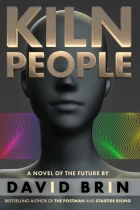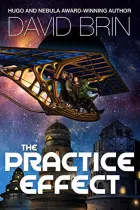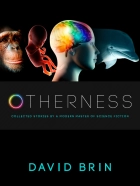So many things to remark-upon, from the recent summit conference about a coming “Singularity,” to the conclusion of the Iraq and Libya wars, to the critical issues raised by Occupy Wall Street… and the prospects for banking transparency in the light of Moammar Ghaddafi’s stolen $200 billions….
…but I want to focus this time on some amazing thoughts and images from old and new frontiers of science.
 We’ve entered the extended centennial of Captain Robert Falcon Scott’s doomed expedition toward the South Pole, from 1910-1913. A source of mythic moments, both noble and absurd, that could never have come from fiction.
We’ve entered the extended centennial of Captain Robert Falcon Scott’s doomed expedition toward the South Pole, from 1910-1913. A source of mythic moments, both noble and absurd, that could never have come from fiction.
I cannot too-highly recommend both the book “The Last Place on Earth” and the subsequent television miniseries. The latter, especially, is just stunning. Visually gorgeous and haunting. Superbly acted. And probably the best-ever juxtaposition of the extreme consequences of human competence… or the utter lack thereof.
 The stark contrast between Scott’s emotional fragility – his mercurial foolishness – and the calm display of relentless ability shown by his rival, the Norwegian explorer Roald Amundsen, is one of the most effective comparisons I have ever seen.
The stark contrast between Scott’s emotional fragility – his mercurial foolishness – and the calm display of relentless ability shown by his rival, the Norwegian explorer Roald Amundsen, is one of the most effective comparisons I have ever seen.
While you’re at it, see a series of unseen photographs–incredible images that were recently published in “The Lost Photographs of Captain Scott,” by polar historian Dr. David M. Wilson.
== Deliberately Frozen ==
There were many aspects to the recent Singularity Summit, where I heard the regular paeans to transcendence issued by Ray Kurzweil and others… plus deeply concerned discussions by Peter Thiel, Skype founder Jaan Tallinn, Artificial Intelligence theoretician Eliezer Yudkowsky and other brilliant minds, about “how to keep Artificial intelligences loyal.” (The latter is a topic that I touch upon repeatedly in my coming novel EXISTENCE.)
One thought occurred to me during an extended panel discussion…
… that we do NOT want the new, godlike super-intelligences to emerge suddenly out of stock market trading programs, which are fine-tuned to be utterly predatory, parasitical and ruthlessly sociopathic. If there were no other reason to impose a transaction tax, that should utterly suffice!
 Bemusing were the medallion disks that several presenters displayed, hanging from neck chains, instructing paramedics to inform their cryonics providers, in case of approaching death, so that the head can be injected with subtle antifreeze and chilled for storage, in confident expectation of resurrection and glory in better days ahead.
Bemusing were the medallion disks that several presenters displayed, hanging from neck chains, instructing paramedics to inform their cryonics providers, in case of approaching death, so that the head can be injected with subtle antifreeze and chilled for storage, in confident expectation of resurrection and glory in better days ahead.
Who has signed up? Some of my best friends. Is it tempting? Well, like many singularity/transcendentalist notions, I can talk up the positive points with the best of ’em. And around these guys I find myself inevitably going into the downsides. (Well? I am “contrary brin,” after all.)
 My full, sober reflections are to be found in this earlier essay, Do We Really Want Immortality? Still, these guys talk up a good show. And the Scott-Amundsen centennial brought fascinating comparisons to mind.
My full, sober reflections are to be found in this earlier essay, Do We Really Want Immortality? Still, these guys talk up a good show. And the Scott-Amundsen centennial brought fascinating comparisons to mind.
== Using Life to Build Things? ==
Okay, this is kind of weird. Using a simple, single-step process, engineers and scientists at the University of California at Berkeley recently developed a technique to direct benign, filamentous viruses called M13 phages to serve as structural building blocks for materials with a wide range of properties. By controlling the physical environment alone, the researchers caused the viruses to self-assemble into hierarchically organized thin-film structures, with complexity that ranged from simple ridges, to wavy, chiral strands, to truly sophisticated patterns of overlapping strings of material–results that may also shed light on the self-assembly of biological tissues in nature.
In nature, the virus attacks Escherichia coli (E.coli), but in bioengineering laboratories, the virus is emerging as a nanoscale tool that can assemble in complex ways due to its long, slender shape and its chiral twist.
== Mammalian Organ Regeneration ==
The most fascinating talk at the Summit came not from a singularitarian or transcendentalist, but one of the brilliant scientists who are making tomorrow day by day. (Despite society’s turn toward ungrateful nonsense, like the Foxite War on Science.) Stephen Badylak was lately featured on the show “60 Minutes,” and is is currently a Research Professor in the Department of Surgery and director of Tissue Engineering at the McGowan Institute for Regenerative Medicine at the University of Pittsburgh. Dr. Badylak showed us the latest about organ regeneration in humans and other mammals.
I was stunned. Sure, I follow what’s going on. I know that important work is being done with stem cells, and with “scaffolding” — the use of non-cellular pig-based or other material to create a pre-shaped trellis for new cells to grow upon, into a replacement organ. There have been amazing successes in the latter arena.
Dr. Badylak spoke of the great obstacle — inflammation — which we are now perceiving as one of the biggest enemies of health in so many ways. In this case, the tendency for the body to react to injury by getting livid and puttying the site with crude patching material that we call scarring. Preventing the crude version of inflammation is step one.
 He then described the wide variety of hormonal growth factors that come into play when undifferentiated cells are asked to turn into muscle, nerve and other types of tissue. At this point I expected him to then describe an artisan craft — painting, injecting and impregnating these chemicals into different parts of the scaffolding, in order to say “grow muscle here” and “lace in nerves here!”
He then described the wide variety of hormonal growth factors that come into play when undifferentiated cells are asked to turn into muscle, nerve and other types of tissue. At this point I expected him to then describe an artisan craft — painting, injecting and impregnating these chemicals into different parts of the scaffolding, in order to say “grow muscle here” and “lace in nerves here!”
Imagine my surprise when it appeared that they do no such thing! His recent profound successes have come simply by fighting inflammation, inserting the scaffold material… then encouraging the patient to USE the regenerating area, as soon as possible. He showed us how a cancerous esophagous was ripped out and replaced by a scaffold tube, held open with a stent. In other words, use it immediately. And within weeks… a new/natural esophagus is in place. He showed similar examples like an Iraq war veteran who regrew most of a blasted away leg muscle.
????? Do you know what this means? I pondered, there in the audience.
It means that mammals have had extra regenerative capacity, held mostly latent within us for the last hundred million years. So why don’t we regrow major tissues, organs, even limbs by erecting scaffolding of our own? I thought about it.
Consider. Mammals are the hothouse-types. Racing about, burning fuel like mad and eating like crazy, with a metabolism that won’t quit or even pause. Furthermore, nearly all mammals are quadrupeds who, if they lose a limb, are utterly incapacitated.
Grow one back? When? A low metabolism Amphibian can crawl into a corner and wait while that happens. A mammal can’t. It doesn’t have the reserves. Nobody is going to bring dinner for months at a stretch. And so, we simply gave up the capacity to regenerate!
Scarring is the quick-patch substitute. If the injury is slight, scarring let’s us get back to business asap. If the injury would take months to regrow, forget it. Not worth the investment to maintain a capacity that won’t do any good anyway.
Except that now we humans can rest those months. And we can hobble around with three limbs while one recovers. And we can augment the process with complete, hand-made and perfectly sculpted scaffolds, all-at-once. And so, for the first time since dinosaurs roamed the Earth, mammals may resume doing this fine thing. Regenerating portions that we have lost.
Don’t get your hopes up right away. There is much to do and accomplish and test. But if this pans out, then we’ll have that much more to owe to God’s second greatest gift to us – right after Love:
— It’s curiosity. And the skill and care and brilliance to be co-creators.
That is… unless the awful-stupid ingrates who are waging all-out war on science have their way.
== Late Word ==
I was so ticked off that they had killed Moammar Ghaddafi. Not because I loved the guy, or thought he deserved any consideration. Well, my mature 5% wants all procedures to be followed for all people – the Enlightenment Way. But no, I was pissed… because only he knew where all his money was kept!
Today’s paper carried estimates of Two… hundred… billion dollars stolen from the nation and people of Libya. Ooh, what a clear case for “helvetian” levels of anger! (You’ll understand if you read my novel EARTH!) That’s why it was good to hear, minutes ago, that they captured Ghaddafi’s top and ablest son, who may know many of the codes. For that reason alone, watch his health. I wouldn’t want to be the man’s prison food taster….













































